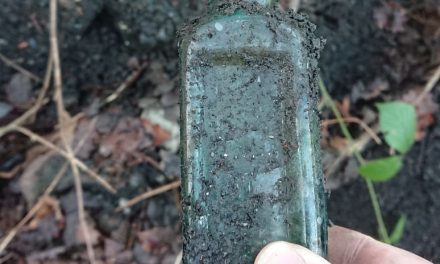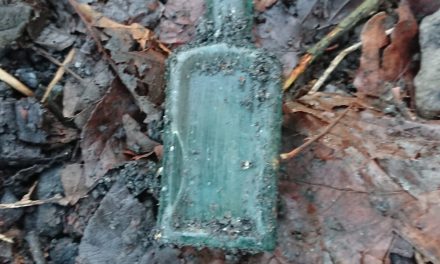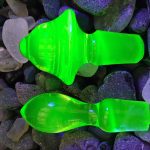Bottle digging is considered an obscure hobby that discovery enthusiasts love to take part in. It allows people to discover new things about the past, and you can even find items of real value when you go bottle digging. There are so many ways to connect to our past, and this hobby is a great way to do so while having fun at the same time. You never know what you are going to find, and some interesting things can come up along the way that you weren’t expecting.
This might sound like a job for an archaeologist or a specialist in finding things of historical value, but anyone can take part, and there is absolutely no limit on what you can find. If you are interested in finding out all there is to know about bottle digging, then you have come to the right place. Keep reading to find out more about how this hobby came about and how you can take part.
What to expect from our article
What is bottle digging?
Bottle digging, also known as dump digging, is the method of carrying out research on old maps to locate historical rubbish dumps and then digging in the area to unearth items buried in the ground. You can find a wide variety of things , including Victorian bottles, antiques, and even collectibles.
Sometimes on bottle digging sites you can find Antique bottles on the surface, but other times you may have to dig several feet down before you find anything. These bottle digging sites can be up to centuries old, but usually they date back to the Victorian era and the late 19th and early 20th centuries. The main target of bottle digging is the search for antique bottles and other forgotten objects from the past.
Bottle digging can be an exploration of history that typically involves hours of digging through the ground with a shovel and other helpful tools for bottle digging. You will never know what treasure lies beneath the surface, but you might be able to find items of historical and cash value. Finding the right places to search might be more tricky, but you can read our article on all of the best places to look for potential dumps to find out more.
The best places to look are those that are likely to have been old dump locations some time ago. You can look at old maps to help you in your search and also follow our tips and tricks to find the best locations for bottle digging. Those in search of bottle dump locations will typically look for clues like shattered glass and rusted metal on the surface of such locations. Some places to look can include the woods, at embankments, the edges of old towns, and dried out water sources. All of these places can lead to all sorts of discoveries that are just waiting to be found.
There are also many coastal areas that you can search, as years ago, people used to throw their trash over the edges of cliffs as a way of disposing of all of their waste. The amount of time that it takes you to find a great location will depend on how much time you have to dedicate to the hobby.
What can I find bottle dump digging?
The location where you are searching for treasure can actually influence the type of things that you are able to find. Different locations will yield different items, and what you find will vary from place to place.
For instance, a dump that is located in a town might have surprisingly different results from a dump in a coastal location. You can find things like old china, toys, military relics, pottery, bottles, glass, and so much more.
Some of the things that you find might be broken or damaged, but other things can be found fully intact. This will depend on many outside factors that could result in damage to the items. If you are lucky enough to find items in great condition, then even better.
Searching for finds can sometimes prove difficult, but with perseverance, you never know what you might find. Sometimes, you just need to dig a little deeper to find what you are looking for. The general rule with bottle digging is to keep trying until you get your desired results.
How do you find a bottle digging dump?
“One man’s trash is another man’s treasure.” What the Victorians and people from other time periods considered rubbish, we might not. This is why people like to spend their time bottle digging to see what they might find to add to their collection. Many of these dump locations were places like railway sidings, embankments, harbours, marshy shorelines, and other areas that they did not plan to develop at the time.
Looking in these types of areas is a great place to start, and people often dig in these areas in search of bottles and other items of interest. Lots of rubbish would have been dumped by a variety of people in the same locations, so there could even be household items here that have been buried over time as the land has changed.
Sometimes, these places are discovered accidentally when modern society expands their building developments and needs to dig up land in the process. In these cases, building work can even be delayed to allow people to excavate the area before it is covered up again.
Most of these dump locations still remain undiscovered due to the obscurity of them. Bottle digging is not the most well-known of hobbies, which means that there are plenty of items that are still waiting to be found. If you do your research, you can find locations of your own that might not have even been searched yet.
Another reason that some of these locations have not yet been discovered is the fact that they have been moved with the flow of water. In places like rivers, when the rubbish was dumped, it could have been picked up by the current and deposited somewhere new. You can follow rivers to find embankments and other places where these items might have ended up.
If you don’t know what you’re looking for, finding a bottle digging dump can be a very time-consuming process. Because of this, in the following section, we are going to provide you with our best advice to help you in finding bottle dump locations.
- Get walking, bottle digging dumps could be absolutely anywhere, you can recognise one as there are usually brambles, nettles, alder/elder and silver birch trees growing on it.
- Keep an eye out for surface finds while out walking as animals digging burrows can bring items to the surface.
- Check out the library for old maps of the area you want to go bottle digging. You can also buy old maps, we like to use Cassini maps. you can also view old maps here. Clay pits, old quarries, gravel pits, marsh land, old canals, and anything else that can be filled with waste from before 1920 are all potential landfill sites.
- Look for books about bottle digging, a good one is bottle collecting by Edward Fletcher.
- invest in a metal detector. you might be surprised to know that most bottle dumps have been found by accident. bottle dumps usually contain metal.
The Dangers of Bottle Digging
While bottle digging is a fun activity that anyone can take part in, there are certain precautions that you will need to take in order to stay safe. If you are taking this hobby really seriously and are digging very large holes that you have to stand in to keep digging, then you must be really careful. These holes can collapse in on themselves, and you can get trapped inside, which is very dangerous and something that you will want to avoid. This is why it is important to always take someone with you when you go out digging, just in case of an emergency.
Something that you should always have with you just in case an emergency does arise is a mobile phone. You might think about leaving your phone at home or in your car so it doesn’t get damaged or broken, but if you are visiting a secluded location with nobody around, you’re going to need a lifeline if you get into trouble. To keep your phone protected, you can use a phone case and a screen protector, and you can also use a ziplock bag to keep mud and water away if needed. Having your phone with you is very important so you can call for help if you need to.
Digging in coastal areas is great, as long as you are aware of the tide times before you start. The last thing you want to do is to make your way to a digging area by the sea and get trapped by the tide. It can be easy to misjudge how quickly the tide can actually come in, but you can use a variety of apps and websites to find out the tide times and avoid such a situation.
Another thing that you will need to do is watch your footing on unsteady or difficult terrain. Avoid standing near the edge of a cliff or mud hill because it really can give way at any time, and you don’t want to be standing at the top when this happens. You should note that on a rainy day, mud and clay surfaces can become really slippery, so take your time when you’re moving around, and wear suitable footwear with grip to support you.
Bottle digging doesn’t always have to be done to the extreme, and it can be a fun family adventure in the woods or another location of your choice. There are many people who take part just for fun, and others who are more extreme in their methods, but either way, we hope that you enjoy your bottle digging adventure.

















Trackbacks/Pingbacks